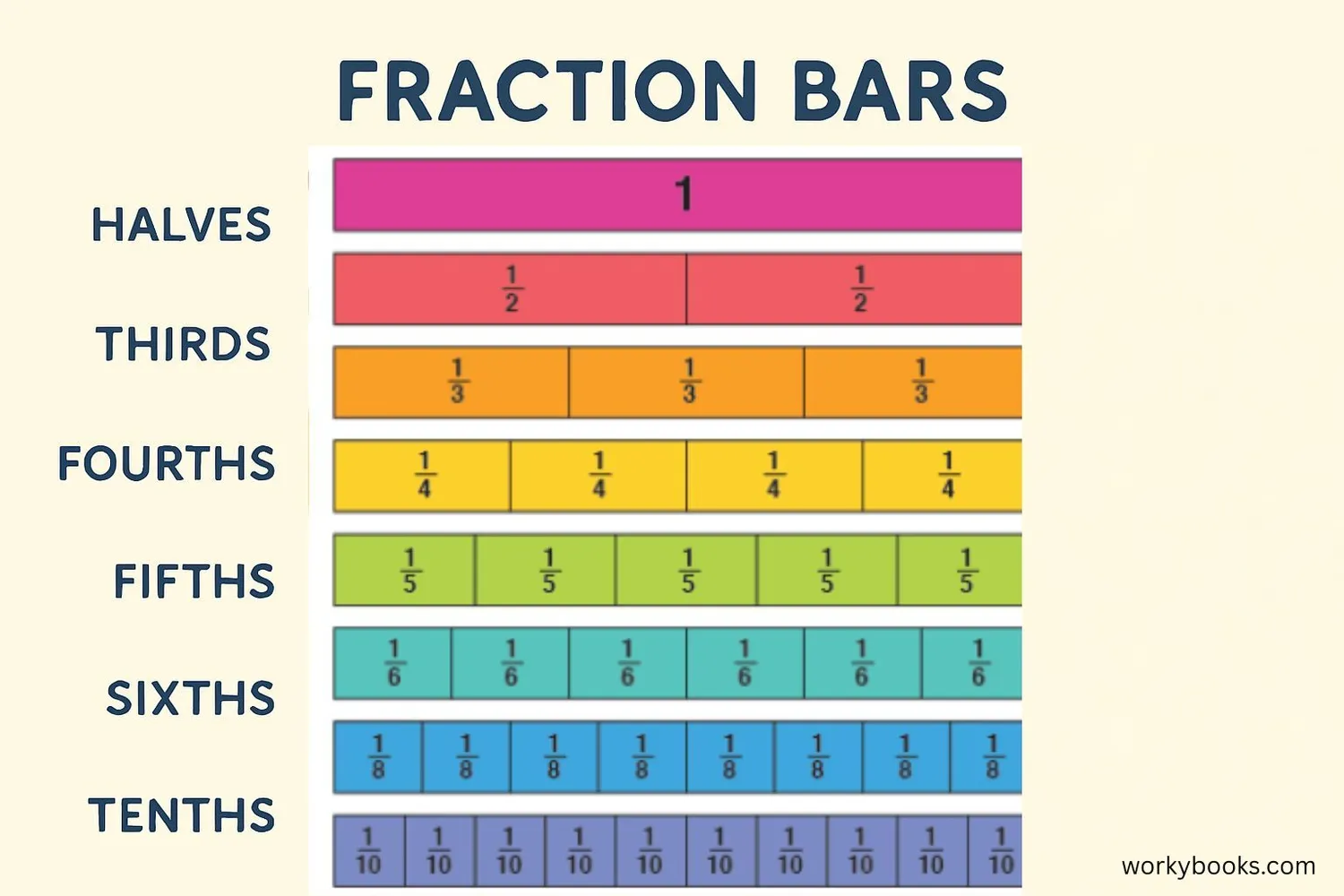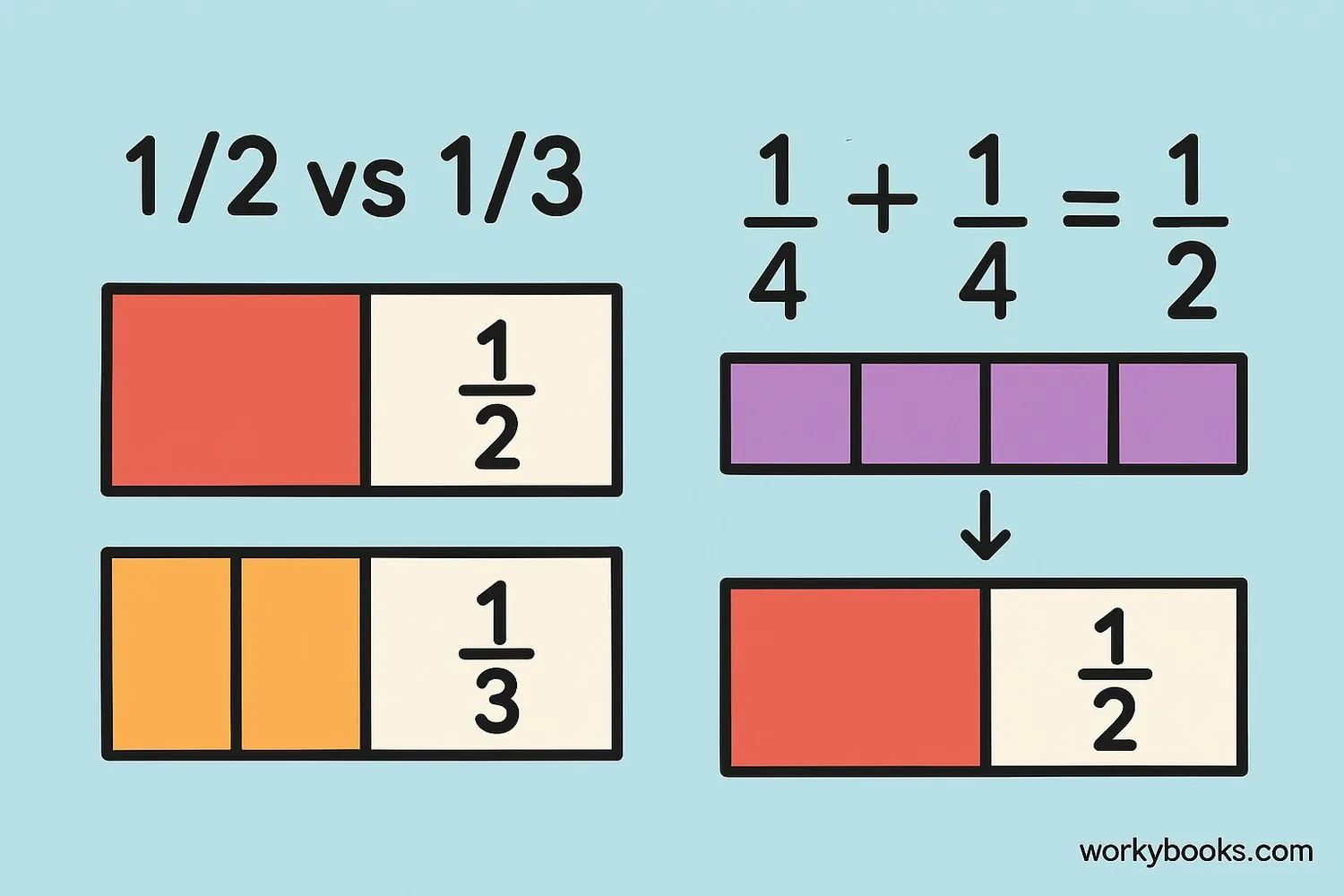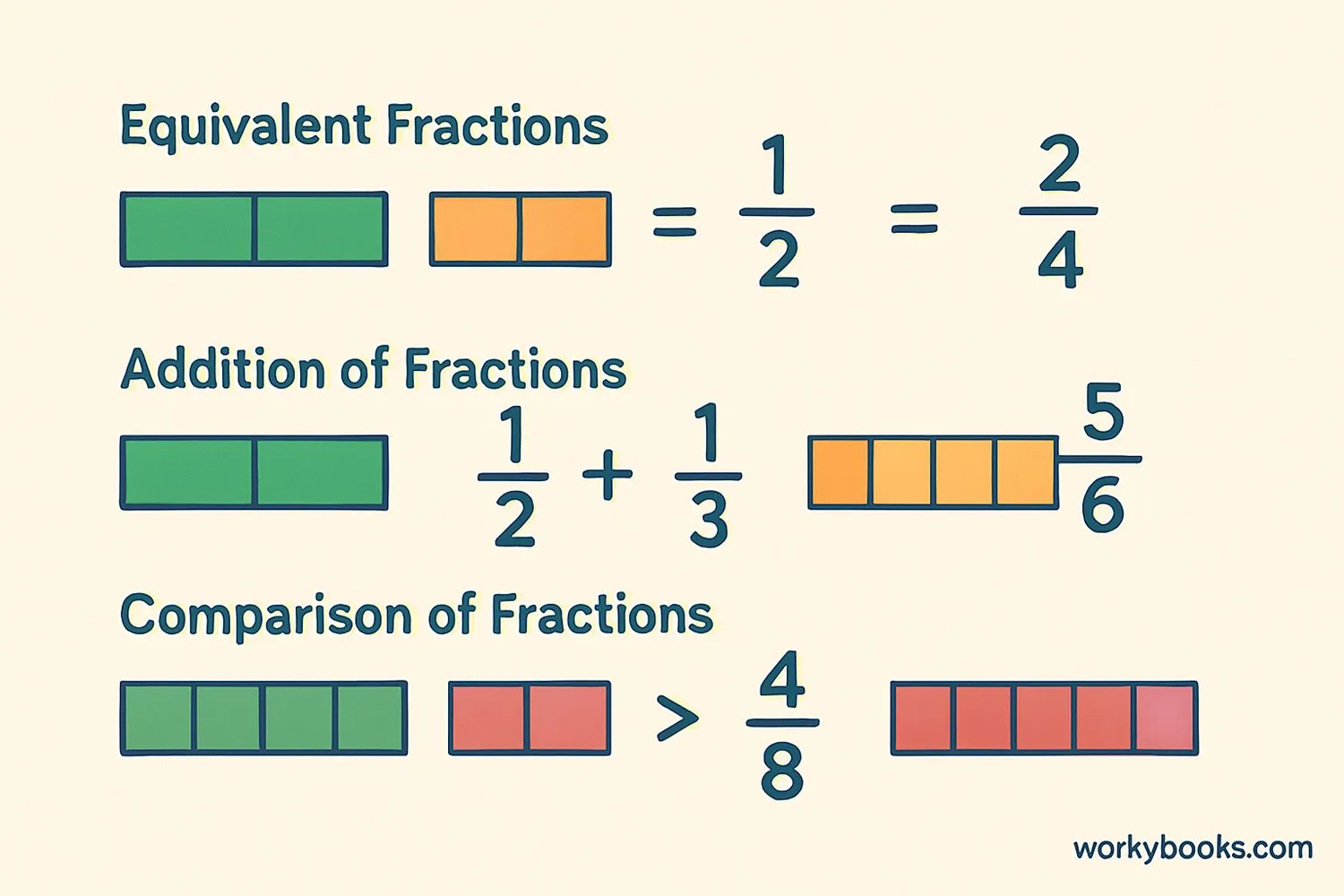Fraction Bars - Definition, Examples, Quiz, FAQ, Trivia
Learn about fraction bars with visual models, examples, and practice activities
What is a Fraction Bar?

A fraction bar is a visual representation of fractions that helps us understand how fractions work. It's a rectangular bar divided into equal parts to show the relationship between the numerator (top number) and denominator (bottom number).
The fraction bar is also called a vinculum, which is the line between the numerator and denominator. Fraction bars are sometimes called fraction strips when they're used as manipulatives that you can move around.
Fraction bars help us see fractions as part of a whole. For example, if a bar is divided into 4 equal parts and 1 part is colored, we can see that 1/4 means one out of four equal parts.
Key Concept
The fraction bar (vinculum) represents division. The numerator is the number of parts we have, and the denominator is the total number of equal parts.
Using Fraction Bars

Fraction bars are helpful tools for many fraction concepts:
Comparing fractions: By placing fraction bars side by side, we can see which fraction is larger or smaller. For example, we can see that 1/2 is larger than 1/3 even though 3 is larger than 2.
Finding equivalent fractions: Fraction bars help us see that different fractions can represent the same amount. For example, 1/2 looks the same as 2/4 and 3/6.
Adding and subtracting fractions: We can combine fraction bars to see how fractions add up. For example, 1/4 + 1/4 = 1/2.
Understanding unit fractions: Fraction bars help us see that unit fractions (like 1/2, 1/3, 1/4) are the building blocks of all fractions.
Remember
When using fraction bars to compare fractions, make sure the wholes are the same size for a fair comparison.
Fraction Bar Examples

Let's look at some examples of how fraction bars help us understand fractions:
Example 1: Representing 3/4
A whole bar is divided into 4 equal parts. 3 of these parts are colored. This shows that 3/4 means three out of four equal parts.
Example 2: Comparing 2/3 and 3/5
When we place the 2/3 bar next to the 3/5 bar, we can see which is larger. We might notice that 2/3 is larger than 3/5.
Example 3: Adding 1/3 + 1/6
We can combine a 1/3 bar with a 1/6 bar. Notice that two 1/6 bars equal one 1/3 bar. So 1/3 + 1/6 = 1/2.
Example 4: Finding equivalent fractions for 1/2
We can see that 1/2 is the same as 2/4, 3/6, 4/8, and 5/10. All these fractions take up the same amount of space in the whole.
Practice Tip
Try creating your own fraction bars with paper or digital tools. The more you work with them, the better you'll understand fractions!
Fraction Bar Quiz
Test your understanding of fraction bars with this 5-question quiz. Choose the correct answer for each question.
Frequently Asked Questions
Here are answers to common questions about fraction bars:
Math Trivia
Discover interesting facts about fractions and mathematics:
Ancient Fractions
The ancient Egyptians used fractions as early as 1800 BC, but they primarily used unit fractions (fractions with 1 as the numerator). They would write other fractions as sums of unit fractions.
Fraction Bars in Recipes
Fraction bars are like the measurements in recipes! When you see 1/2 cup or 3/4 teaspoon, you're seeing fractions in everyday life. Cooks use these fraction measurements to combine ingredients in the right proportions.
Fractions in Music
Musical notes are based on fractions! A whole note lasts 4 beats, a half note lasts 2 beats, a quarter note lasts 1 beat, and an eighth note lasts half a beat. Fractions help musicians keep time.
The Word "Fraction"
The word "fraction" comes from the Latin word "fractus" which means "broken." This makes sense because fractions represent broken or divided parts of a whole object or number.





